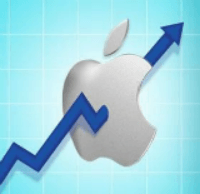The From Line
As published in MediaPost
Email newsletter monetization
When publishers think about email newsletter monetization, the first things that come to mind are usually list rentals, sponsorships, and display ads. While these typical pre-click monetization tactics work well, they often have inherent risks such as subscriber disengagement, list attrition and deliverability issues.
What if there was a more elegant way to monetize email? While most publishers focus on the real estate inside an email for monetization opportunities, they often overlook the most valuable parcels containing complete subscriber attention: the post-click.
Email post-click monetization
Every experienced publisher knows that the actual value of email is not in the opens, but in the clicks. The open statistic is just a prelude to the end goal of focusing a subscriber's attention to valuable content and revenue-producing advertising. Knowing this, nothing is more attention-grabbing than the anticipation of what's on the other side of a click. A quick shot of dopamine commits the subscriber to focus intently on what will happen next. This prime email real estate, the process of going from email to website, the post-click, is what gets squandered the most when publishers monetize email.
Thankfully, there are now targeting methods allowing publishers to monetize this neglected post-click real estate efficiently, without sacrificing list attrition or subscriber engagement. One recent email monetization study by Gold Lasso concluded that most pre-click tactics provide a 2 to 7 times increase in subscriber attrition or disengagement, while post-click tactics have no effect.
Ironically, many of these post-click methods are the same as pre-click (inside the email) but are repurposed for the post-click opportunity. The most prevalent example is leveraging an email address's MD5# or encrypted version. Aside from email marketing, the email address is now serving a multitude of purposes such as creating custom audiences on social networks and providing new revenue opportunities for publishers. Many ad networks now allow publishers to submit an email address's MD5# (instead of a cookie) to return a dynamically created personalized ad. Meaning, everything that you once did inside your email, you can now do outside your email, including video targeting.
Measuring the value of these new email monetization tactics is relatively easy. Basic CPM, CPC, and click-through rates will suffice. Most important, there are no opportunity costs, since most publishers fail to take advantage of email post-click opportunities to begin with.
Measuring the risk associated with these tactics is different. Raw email statistics such as opens, clicks and opt-outs are important, but applying a new combination of ratios can reveal a more telling story. The first new statistic publishers need to be mindful of is the open to click-through rate: that is, the total or unique clicks divided by the total or unique opens (clicks/total opens). If subscribers are conditioned to know they will see an interstitial or targeted ad unit, and are vehemently opposed to the practice, they won't click an email link. If this happens this statistic will fall precipitously, resulting in lower email engagement.
The second statistic is the click to opt-out rate, calculated by dividing the number of opt-outs by the total or unique clicks. If this statistic rises after implementing a post-click monetization program, the increase signifies greater than normal list attrition. To get a better understanding of your program's risk, it is best to compare these statistics to both before and after its implementation.
Despite some initial reservations by publishers, almost all realized that post-click email monetization programs provide new revenue opportunities with minimal risk.
 Email deliverability is the most crucial part of your marketing plan. You can have the world's most talented copywriters and the most eye catching graphic designs, but if your email ends up in the spam folder, or perpetually floating around cyberspace, your hard work is all for nothing. But how do you know that your emails are reaching their destination? Most importantly, what do you do when you find out they aren't?
Email deliverability is the most crucial part of your marketing plan. You can have the world's most talented copywriters and the most eye catching graphic designs, but if your email ends up in the spam folder, or perpetually floating around cyberspace, your hard work is all for nothing. But how do you know that your emails are reaching their destination? Most importantly, what do you do when you find out they aren't?
According to the Global Email Deliverability Benchmark Report by Return Path, “only 81% of all permission based email makes it to the world’s inboxes. Globally, one out of every five emails lands either in a spam or junk folder (7%) or simply goes missing—blocked by ISP level filtering (12%)”. Though an 81% deliverability rate is certainly respectable, over time, that 19% difference can make a big impact on your bottom line.
Consider this: if you send out 1,000 emails, that is 190 customers who will never hear your message. 190 missed opportunities to make a connection with a person who might be looking for exactly what you are selling. If you snowball this as your email lists continue to grow, you could soon be looking at thousands of lost clients.
To combat this, monitor your email deliverability closely by analyzing bounce back errors, and act to rectify the problems as they arise. If the subscriber’s mailbox doesn't exist, you can remove it from your list. However, if it is a temporary issue, the email address can continue to be monitored and sent mailings periodically. List cleansing and email verification services like LeadSpend exist to aide marketers in this.
 The era of the smart phone is fully ascendant in 2013. This year Deloitte estimates that the billionth such device will be activated. However, mobile marketing success going forward will be about much more than just numbers. Anticipating how user behavior will evolve will be absolutely crucial to a well-managed mobile marketing budget.
The era of the smart phone is fully ascendant in 2013. This year Deloitte estimates that the billionth such device will be activated. However, mobile marketing success going forward will be about much more than just numbers. Anticipating how user behavior will evolve will be absolutely crucial to a well-managed mobile marketing budget.
Linear No More
For example, consider the 'second screen' phenomenon. The old paradigm, first on laptops and then on mobile devices, was linear. That is, users would move through channels in succession. Linear consumer behavior is relatively easy to track as one moves from point A to point B to point C.
Now, a new behavior pattern is emerging. For example, more and more smartphone users are active while simultaneously watching TV. Key questions arise. To what degree will smartphone usage relate to the 'second screen,' the TV? Will TV viewing and smartphone activities be related or not?
Smartphones may become popular as a means for further interaction with a television program. Should such consumer behavior proliferate, mobile marketing can respond with a more cross-channel, holistic approach. In fact, in ideal scenarios, the impact on advertising may almost be counter-intuitive. That is, the successful advertisers that truly engage such cross-channel users may gain their attention in very relevant ways.
Asked by Lauren Rutley, Visual Mining
Answer by Elie Ashery, CEO

Click Through Rates and Open to Click Through Rates
Before any marketer should worry about their overall click through rates, they should first concentrate on their open to click through rates (number of unique clicks/number of unique opens). This stat reveals a lot about your content relevancy, value and creativeness. If your open to click through rate is high but your overall unique click through rate is low, you’re in a much better position than if both stats are low. Assuming your sender reputation is stellar, the reason for this is that it shows the subscribers opening your email find the content relevant and engaging. More importantly, to get additional subscribers to open your email is more of a less costly function of creating compelling and enticing subject lines. With both open to click through rates and unique click through rates low your problem is much bigger. The issues can range from poor email design to content value. From a design standpoint I find that B2C marketers think what works on the web will work in email and from B2B marketers they think what works in direct mail will also work in email. Just as the same rules don’t apply to newspapers and radio the same is true in crossing online mediums.
Since you’re a B2B marketer I encourage you to keep your designs simple, with less words. Especially for complex sales it’s important to focus only on the pain points. Busy executives don’t have the time to sift through fluff. Keep your calls to action easy to find and above the fold. Remember, most people are lazy and don’t like to scroll. Assessing content value is a much more difficult process. It involves surveying your core clients or the new markets you’re after and constant testing. Don’t be afraid to change content formats. What works today will probably not work tomorrow. If your market isn’t downloading your white papers from your email try a click through to a podcast (read your white paper). Executives like to take mental breaks and let someone else do the driving. Creativity is the heart of valuable content that’s palatable. This is where you draw the line with company quants.
 iPad passes Mac computer in sales. The tablet is the new frontier.
iPad passes Mac computer in sales. The tablet is the new frontier.
It’s official. Consumers are tablet crazy; so much so that they are choosing the mobile devices over computers. It’s that time again marketers, just when you’ve finally optimized for mobile…
A look into Apples record breaking year provides an impressive example of the tablets’ rapid rise in popularity. In 2011, the company sold over 156 million iOS devices (iPhone, iPad, and iPod Touch), 55 million of which were iPads. To put this in perspective, in just one year combined sales of these mobile devices have exceeded the 122 million Mac computers ever sold. Since it was first available for pre-order in March of 2010, the sales trend of the iPad has blown all other Apple products out of the water (see figure below). CEO Tim Cook commented “This 55 is something no one would have guessed. Including us. To put it in context, it took us 22 years to sell 55 million Macs. It took us about 5 years to sell 22 million iPods, and it took us about 3 years to sell that many iPhones. And so, this thing is, as you said, it’s on a trajectory that’s off the charts.” There has been buzz for some time of the possible upcoming announcement of the iPad3, and today we have verification via Mashable that Apple has sent out invitations for an event on March 7th. The invitation states simply “We have something you really need to see. And touch” and according to Mashable is "superimposed on what is almost certainly an iPad". Knowing this, it is more crucial than ever for marketers to take to heart the magnitude of this trend. It has been rumored that the newest generation iPad will have a full operating system, providing the user with a full blown hand held computer, and conceivably further intensifying this trend. Yes, Apple is just one example, but I think it’s safe to say they are usually ahead of the trend. Assessing how we communicate via tablet will be paramount.

